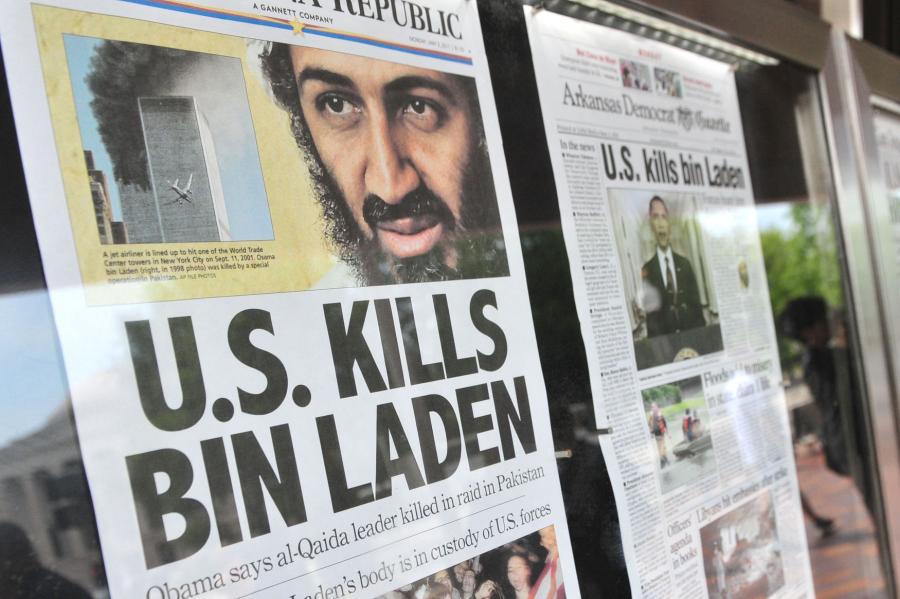
Much has been made of the recent revelations that Osama bin Laden was unarmed at the moment he was killed by U.S. special operations forces in close quarters battle. Let us put this issue to rest with dispatch, once and for all: Killing bin Ladin was not an extrajudicial execution, a murder, or a war crime. It was a combat engagement lawful under U.S. and international legal authority – full stop.
Two rationales undergird the lawful killing of an enemy combatant, including an unlawful combatant such as the transnational terrorist bin Laden: self-defense and jus in bello.
The self-defense justification usually permits a “friendly” combatant to engage an opponent with deadly force when the combatant believes his or her life, or the life of other members of his or her unit or other authorized protected persons (for example, certain noncombatants present in the area, such as ordinary citizens, children, aid workers, or missionaries), is endangered by the hostile acts or intent of an opponent. Whether the opponent is armed is relevant to the self-defense analysis, but does not solely settle the issue. The key factor is whether a combatant reasonably believes life to be in danger; for example, an enemy combatant may appear to have a weapon, even though he is unarmed. If the friendly combatant reasonably fears for his life or that of a protected person, deadly force is permitted and the defensive killing is not unlawful.
Even so, discussion of the location of bin Laden’s weapon and whether he might have been wearing a suicide vest are utterly irrelevant: engaging him with deadly force is most appropriately viewed as grounded on the second rationale: jus in bello.
The law pertaining to the conduct of hostilities, which has developed since antiquity and includes certain provisions of the modern Geneva and Hague conventions, permits the sanctioned killing of an opponent in an armed conflict, regardless of whether he is armed at the moment he is engaged. So long as the opponent meets the minimum criteria to be regarded as a combatant (even an unlawful combatant), he may be engaged with deadly force, even if he is separated from his weapon. He may be killed while sleeping, eating, taking a shower, cleaning his weapon, meditating, or standing on his head. It is his status as an enemy combatant, not his activity at the moment of engagement, which is dispositive.
Osama bin Laden was an enemy combatant – again, full stop. His status as a virtual enemy of the United States is grounded on several factors: the declaration of war (fatwa) by Al Qaeda, of which he was the nominal chief, against the United States in 1996 and again in 1998; the Congressional Authorization for the Use of Military Force (AUMF) of September 18, 2001 (Public Law 107-40); and, most likely, declaration of a state of hostilities (essentially, a state of “war”) by the president against an opposing belligerent: Al Qaeda, its footsoldiers, and its leaders. The qualifier “most likely” indicates that if the president has, in fact, declared Al Qaeda to be a hostile, belligerent force, the designation probably would be classified and non-public. It is also superfluous, as Congress supplied the necessary authority in the AUMF to make combat actions against Al Qaeda lawful. They described a category of combatants who may be targeted by U.S. forces, and Osama bin Laden fell squarely into that category more precisely than any other person in the world. His conduct as he stared down the wrong end of an MP-5 was immaterial.
There are only two ways a designated combatant can be exempted from lawful targeting: by manifesting a clear and unequivocal intent to surrender, and by becoming wounded or otherwise incapacitated and incapable of resistance (hors d’combat). There is no evidence bin Laden was wounded prior to administration of the lethal force which ended his life. Moreover, U.S. forces engaged in armed conflict are under no obligation to give an enemy combatant a chance to surrender; the enemy combatant must practically force his surrender on the U.S. force by manifesting it clearly, timely, and in a manner which enables U.S. forces to discontinue the use of lethal force. At this instant, a shield of legal protection descends around him, and U.S. forces are obligated to treat him humanely and consistent with the laws of armed conflict pertaining to detainees—as they did when Saddam Hussein surrendered in December 2003. Until the shield is present, triggered by manifest surrender, it is absent. Without the shield that only he could initiate through his surrenderous conduct, bin Laden remained a legitimate target and was treated so by the assaulting U.S. force.
Bin Laden’s death was a triumph for the American intelligence community and the armed forces and provides, at long last, some solace to the victims of 9/11 and Al Qaeda’s other terroristic acts. His death will likely prove to be a strategic gain, and it eliminates a continuing threat to Americans at home and her citizens and forces abroad. It also was completely sanctioned under U.S. and international law. The intellectual energy spent obsessing and hand-wringing over bin Laden’s death would be better spent on less clear-cut law of armed conflict issues facing the nation and the international community.
Butch Bracknell is a lieutenant colonel in the U.S. Marine Corps. A career military lawyer, he is a Senior Fellow at the Atlantic Council.
Image: osama-bin-laden-killed-newspapers.jpg
